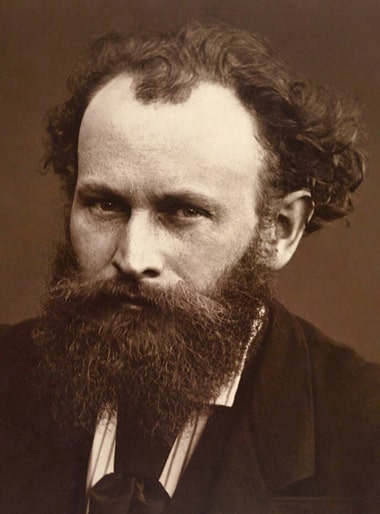Edouard Manet Biography

Edouard Manet (1832-1883) was a French modernist painter known for his candid realism and his role in the transition from Realism to Impressionism. Born into an upper-class household, Manet was encouraged to pursue a career in law, but he instead became engrossed in the world of painting.
Manet's early life was marked by his interest in art, and he began studying at the Collège Rollin at the age of 15. He was a talented student and quickly gained recognition for his skills. In 1848, he sailed on a training vessel to Rio de Janeiro, where he was exposed to the works of the Old Masters and the Impressionists.
Upon his return to France, Manet enrolled in the school of Thomas Couture, a painter of large historical paintings. He was an admirer of the works of Diego Velázquez and the use of dark backgrounds, flat figures, and sharp opposites of light and shade. In 1853, Manet visited Italy, Germany, the Netherlands, and Belgium, where he was influenced by the Dutch painter Frans Hals and the Spanish artists Velázquez and Francisco José de Goya.
Manet's artistic style was characterized by his use of loose brush strokes, simplification of details, and the suppression of transitional tones. He adopted the current style of realism initiated by Gustave Courbet and painted contemporary subjects such as beggars, singers, Gypsies, people in cafes, and bullfights. His work is considered 'early modern', partially because of the black outlining of figures, which draws attention to the surface of the picture plane and the material quality of paint.
Manet became friends with the Impressionists Edgar Degas, Claude Monet, Pierre-Auguste Renoir, Alfred Sisley, Paul Cezanne, and Camille Pissarro, through another painter, Berthe Morisot, who was a member of the group and drew him into their activities. The grand niece of the painter Jean-Honore Fragonard, Morisot's paintings first had been accepted in the Salon de Paris in 1864 and she continued to show in the salon for ten years.
Manet became the friend and colleague of Berthe Morisot in 1868. She is credited with convincing Manet to attempt plein air painting, which she had been practicing since she had been introduced to it by another friend of hers, Camille Corot. They had a reciprocating relationship and Manet incorporated some of her techniques into his paintings.
Throughout his life, Manet was influenced by the Impressionists, especially Monet and Morisot. Their influence is seen in Manet's use of lighter colors, but he retained his distinctive use of black, uncharacteristic of Impressionist painting. He painted many outdoor (plein air) pieces, but always returned to what he considered the serious work of the studio.
Manet enjoyed a close friendship with composer Emmanuel Chabrier, painting two portraits of him; the musician owned 14 of Manet's paintings and dedicated his Impromptu to Manet's wife. Throughout his life, although resisted by art critics, Manet's work continued to evolve and influence the development of modern art.